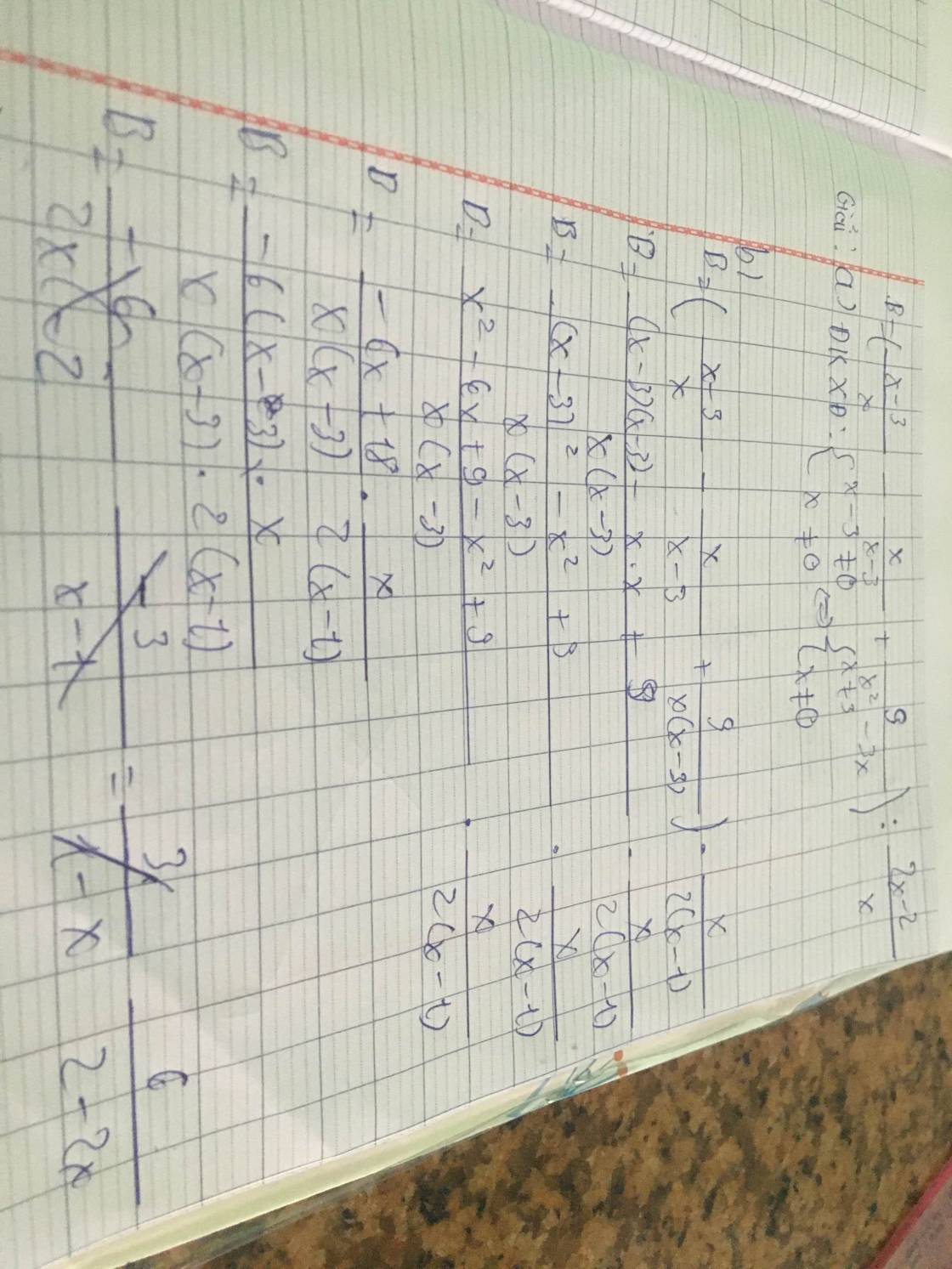Hãy nhập câu hỏi của bạn vào đây, nếu là tài khoản VIP, bạn sẽ được ưu tiên trả lời.

 c/
c/
Ta có : B=2=>6/2-2x
<=>6=4-4x
<=>6-4=-4x
<=>-4x=2
<=>x=2/-4=-1/2
d/ĐKXĐ:2-2x≠0
<=>2(1-x)≠0<=>-2(x-1)≠0
<=>x≠1
Để giá trị của biểu thức B nguyên thì 2-2x là Ư(6)
=>2-2x ∈ Ư(6)={±1;±2;±3;±6) Nếu 2-2x=1=> -2x=-1=>x=1/2( thoả mãng)
Rồi còn nhiêu bạn tự xét trường hợp y trang cách làm ở trênn nnhan :;)).À sẽ có mấy cái trường hợp nó giống ĐKXĐ thì bạn ghi trong ngoặc ko thoã mãn nhan.

a, ĐKXĐ: x≠±2
A=\(\left(\dfrac{x}{x^2-4}+\dfrac{2}{2-x}+\dfrac{1}{x+2}\right)\left(x-2+\dfrac{10-x^2}{x+2}\right)\)
A=\(\left(\dfrac{x}{x^2-4}-\dfrac{2x+4}{x^2-4}+\dfrac{x-2}{x^2-4}\right)\left(\dfrac{x^2+2x}{x+2}-\dfrac{2x+4}{x+2}+\dfrac{10-x^2}{x+2}\right)\)
A=\(\left(\dfrac{-6}{x^2-4}\right)\left(\dfrac{6}{x+2}\right)\)
A=\(\dfrac{-36}{\left(x-2\right)\left(x+2\right)^2}\)
b, |x|=\(\dfrac{1}{2}\)
TH1z: x≥0 ⇔ x=\(\dfrac{1}{2}\) (TMĐKXĐ)
TH2: x<0 ⇔ x=\(\dfrac{-1}{2}\) (TMĐXĐ)
Thay \(\dfrac{1}{2}\), \(\dfrac{-1}{2}\) vào A ta có:
\(\dfrac{-36}{\left(\dfrac{1}{2}-2\right)\left(\dfrac{1}{2}+2\right)^2}\)=\(\dfrac{96}{25}\)
\(\dfrac{-36}{\left(\dfrac{-1}{2}-2\right)\left(\dfrac{-1}{2}+2\right)^2}\)=\(\dfrac{32}{5}\)
c, A<0 ⇔ \(\dfrac{-36}{\left(x-2\right)\left(x+2\right)^2}\) ⇔ (x-2)(x+2)2 < 0
⇔ {x-2>0 ⇔ {x>2
[ [
{x+2<0 {x<2
⇔ {x-2<0 ⇔ {x<2
[ [
{x+2>0 {x>2
⇔ x<2
Vậy x<2 (trừ -2)

a: \(P=\left(\dfrac{-\left(x+3\right)}{x-3}+\dfrac{x-3}{x+3}+\dfrac{4x^2}{x^2-9}\right):\dfrac{2x+1-x-3}{x+3}\)
\(=\dfrac{-x^2-6x-9+x^2-6x+9+4x^2}{\left(x-3\right)\left(x+3\right)}\cdot\dfrac{x+3}{x-2}\)
\(=\dfrac{4x^2-12x}{x-3}\cdot\dfrac{1}{x-2}=\dfrac{4x}{x-2}\)
b: \(2x^2-5x+2=0\)
=>(x-2)(2x-1)=0
=>x=1/2
Thay x=1/2 vào P, ta được:
\(P=\left(4\cdot\dfrac{1}{2}\right):\left(\dfrac{1}{2}-2\right)=2:\dfrac{-3}{2}=\dfrac{-4}{3}\)